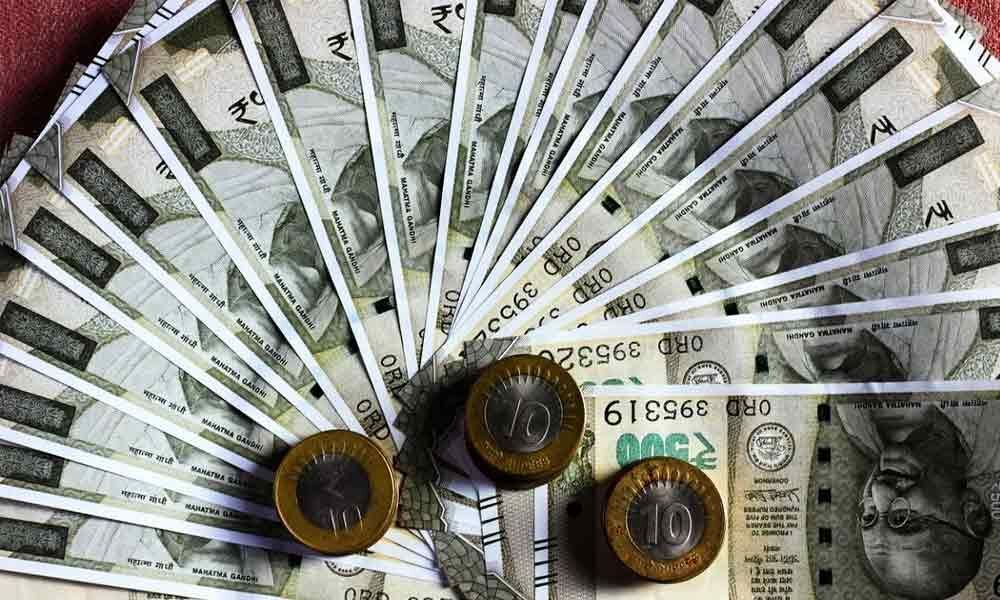Live
- Nizamabad MP Dharmapuri Arvind and Jagtial MLA Dr. Sanjay Kumar Meet CM Revanth Reddy
- Hyderabad CP CV Anand Issues Stern Warning to Bouncers
- MP Laxman Criticizes Police Conduct, Calls for Support for Victims' Families
- Fire Breaks Out in Kachiguda-Chennai Egmore Express, Passengers Evacuated Safely
- CM Revanth Reddy Condemns Attacks on Film Personalities' Homes, Calls for Strict Action
- Victory Venkatesh and Nandamuri Balakrishna to Set Screens on Fire with Unstoppable Season 4
- Over 71.81 crore Ayushman Bharat Health Account numbers generated: Centre
- In special gesture, Kuwait's Prime Minister sees-off PM Modi at airport after conclusion of historic visit
- Veer crowned PGTI Ranking champion, Shaurya wins emerging player honour
- Sr National Badminton: Unseeded Rounak Chauhan, Adarshini Shri reach singles semis
Just In
Survival the biggest challenge for PSBs


The Modi govt allocated `3.26 lakh cr from FY15 onwards to keep public sector banks healthy; That’s a whole lot of tax payers’ money
Whenever I walk into Ramanthapur branch of Andhra Bank in Hyderabad where I have an account for the past 15 years, I always find a particular counter busy.
But it is not the cash counter which is the heart and soul of any bank. It is not the loan counter either, whose performance holds key for a bank's profits.
The counter that is busy is the one that prints passbooks of account holders. I find a big queue at the counter at any given point of time, with the customers holding passbooks in their hands and patiently waiting for their turn.
The man or woman who handles this counter is so busy that he or she will never entertain queries or enquiries. A curt reply and piercing glance await you if you dare to disturb them.
You may wonder why this labourious task of printing passbooks in this age of WhatsUp, Facebook, Twitter, ATMs, email and what not. But that's how public sector banks, PSBs in short, operate.
In these banks, you must wait for your turn patiently even to get your account statement printed on your passbook. There is no alternative.
No wonder the central government pumps in thousands of crores of rupees every year to recapitalise its own banks. In layman's terms, the government is absorbing losses incurred by PSBs by funneling tax payers money into their bottomless holes.
For instance, the Narendra Modi government had pumped over Rs 2.53 lakh crore into PSBs in the last five years i.e. from 2014-15 to 2018-19. Further, it allocated Rs 73,385 crore in the current financial year (2019-20), taking the total to Rs 3.26 lakh crore.
But PSBs or government-owned banks are a necessary evil that India can't live without. Their importance had grown since early 1990s when the government opened doors for private banks.
Like any society around the world, we also have have-nots and haves. That means the poor and the rich. Private banks offer excellent services amid an enticing environment. But those services come at a cost which the poor and the needy can't afford.
While the rich, nouveau riche and the wealthy prefer to enjoy cool comforts while banking at private banks, the poor and the middle class invariably knock at the PSBs for their banking needs.
That way, there is an undeniable need for cheaper banking services that the PSBs offer. But there is a problem of plenty as the country is home to over 16 PSBs now with State Bank of India (SBI) leading the pack.
However, this number is a lot lower than what we had in 2014. SBI had five associate banks including historic State Bank of Hyderabad. All the associate banks and Bharatiya Mahila Bank were merged with SBI in 2017.
Recently, Dena Bank and Vijaya Bank had been merged with Bank of Baroda. These mergers are part of the central government's efforts to have lower number of PSBs that are bigger in size.
On July 19, 1969, Iron Lady Indira Gandhi, then Prime Minister of India, took a historic decision. She nationalised 14 private banks. Prior to that, banking sector was in private hands.
With a single stroke of pen, she brought the banking sector under the government's control. The Reserve Bank of India (RBI) described bank nationalisation as the biggest economic decision since Independence.
That goes on to indicate the importance of her move which has paid rich dividends for the country and its economy over the years. The government could push PSBs to take banking to the doorsteps of people living in hinterlands and villages.
Bank network has now reached every nook and corner of the country. That would not have happened if the banking sector remained in the hands of private people.
But market dynamics have undergone a sea-change post the economic liberalisation in early 1990s and with the entry of private banks around that time.
PSBs are now battling a mountain of bad loans while most of the private banks are hale and healthy. At the last count, non-performing assets (NPAs) or bad loans of public sector banks stood at Rs 9.34 lakh crore by the end of FY19.
Though these bad loans were down by nearly Rs 1 lakh crore in the last financial year, the number (Rs 9.34 lakh crore) is still high. Therefore, survival is the biggest challenge for many PSBs.
It's time that the central government pursues bank mergers vigorously and see that all the financially weak banks are either merged with strong PSBs or privatised.
In my opinion, there should not be more than two or three PSBs which can take care of banking needs of the poor. That will also reduce corruption in banking sector.
Hope the Centre will work towards that goal. That means we need a de-nationalisation of the banking sector even as the country celebrates Golden Jubilee or 50 years of the bank nationalization this year.

© 2024 Hyderabad Media House Limited/The Hans India. All rights reserved. Powered by hocalwire.com






